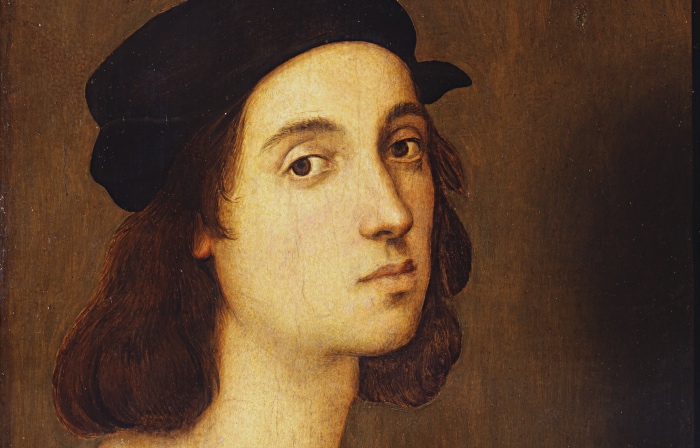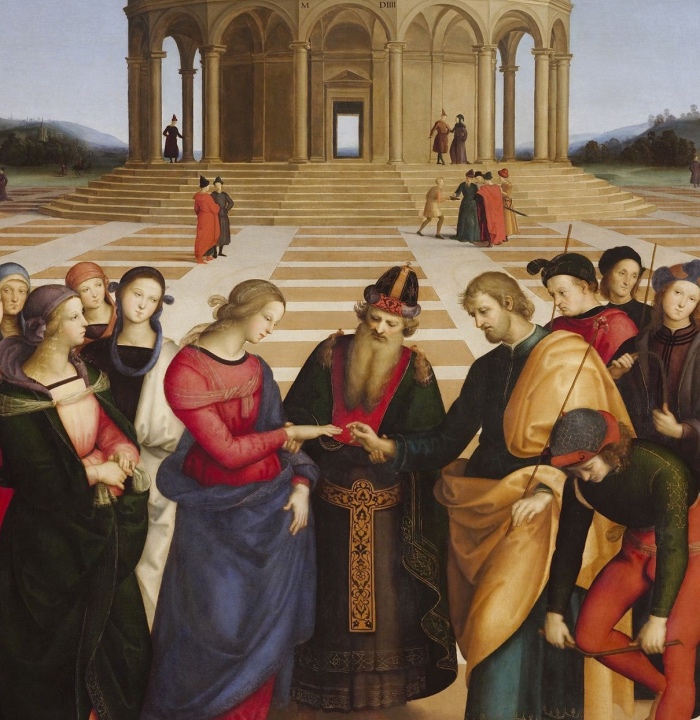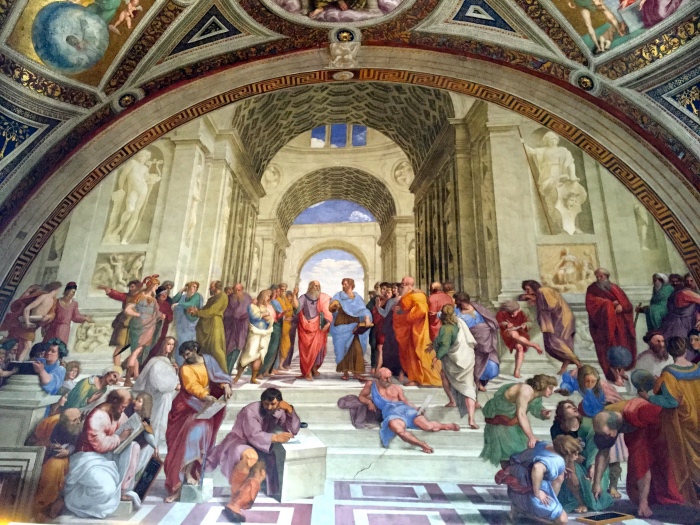
Autoritratto di Raffaello
RAPHAEL, THE LIFE AND THE WORKS: 5 THINGS TO KNOW
Raphael’s life was short but totally devoted to art.
He was a highly talented artist but he had an aptitude for business, in fact he managed his workshop like a firm hiring dozens of assistants able to create any kind of works.
READ ALSO – The Renaissance: the greatest masters
Raphael, life and works: 5 things to know
1. WHEN RAPHAEL WAS BORN
Raphael was born in Urbino in 1483.
His father was Giovanni Santi, a well-known painter who would be the first to reveal the secrets of painting to Raphael.
But it would be Perugino to complete his artistic training, and Raphael would become his pupil.
The refined court of Urbino was for Raphael the place where he could study great artists such as Piero della Francesca, Luca Signorelli and Pinturicchio, who are the first to inspire his early works.
2. FIRST RAPHAEL’S MASTERPIECES
At the age of 17 Raphael was already an art master, and in 1504 he painted the “Marriage of the Virgin” (now housed in Milan at The Brera Art Gallery), and at the end of the same year he moved to Florence where he would closely study the works of Leonardo da Vinci and Michelangelo.

Dettaglio dal “Sposalizio della Vergine” di Raffaello.
3. RAPHAEL’S SUCCESS IN ROME
In 1509 Raphael arrived in Rome, called by Pope Julius II, who was renovating the city of Rome thanks to the contribution of the best artists of his time such as Bramante and Michelangelo. Raphael’s first commission in Rome was the decoration of the papal apartments in the Palace of the Vatican, and later he got a series of commissions from the Pope or people connected with the papal court.
In 1514 after Bramante’s death, Raphael was named architect of the new St Peter’s.
READ ALSO – Things to see in Rome
4. RAPHAEL’S WORKSHOP
To cope with an increasing demand for works and prestigious commissions throughout Italy, Raphael ran his workshop like a firm.
His workshop not only was able to produce demanding works, but it became also a kind of school for many artists who later would become great artists in their own right.
The most important figures were Giulio Romano, the most important artist of Mannerism, and Perin del Vaga.
READ ALSO – Renaissance artist’s workshop
5. WHEN RAPHAEL DIED
Raphael died suddenly in April 1520 at the age of 37.
In his workshop he left some unfinished works which would be completed by his pupils, such as “The Transfiguration” (now on display at the Pinacoteca Vaticana).
His death left a great void in the world of culture, and the artist was buried with full honours in the Pantheon in Rome, where his remains still lie.
READ ALSO – Vatican Museums entrance tickets: how to skip the line

La “Scuola di Atene” negli Appartamenti Vaticani.
READ ALSO – 5 things about Villa Borghese in Rome


sono in possesso di un dipinto su rame, della scuola di Raffaello , raffigurante Madonna con
bambino , ereditato dalla mia famiglia la quale ne era già proprietaria da diverse generazioni.
Sarebbe mia intenzione venderlo , trattativa riservata.
non sapevo fosse morto così giovane!
La sua morte fu un vera tragedia per il mondo artistico e non solo. Raffaello morì il 6 aprile 1520, nel giorno di Venerdì Santo, dopo quindici giorni di febbre e curata con ripetuti salassi.
Fu il suo amico Pietro Bembo a scrivere l’epitaffio che ancora oggi si trova sulla sua tomba al Pantheon: «Ille hic est Raphael timuit quo sospite vinci, rerum magna parens et moriente mori» (Qui giace Raffaello: da lui, quando visse, la natura temette d’essere vinta, ora che egli è morto, teme di morire).
Che Madonna è? quali le dimensioni?
In questo post si parla di Raffaello e non di un’opera in particolare. Non capisco a che Madonna si riferisce.